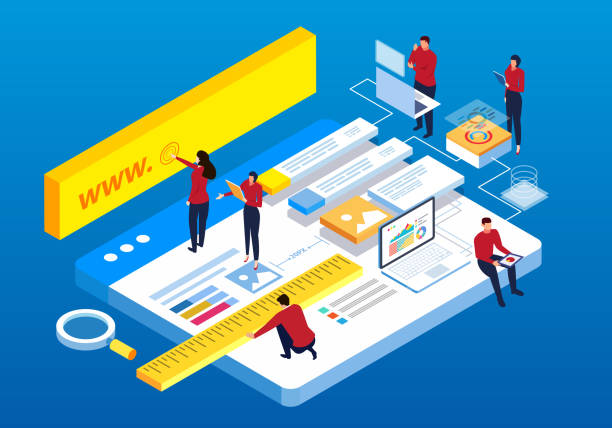Introduction to SEO-Optimized Website Design and Its Importance in the Digital Age
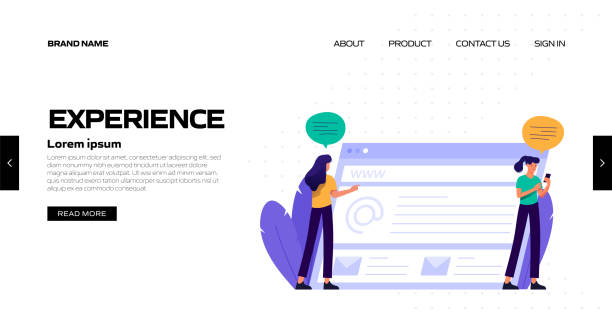
In today’s highly competitive world, simply having a website is not enough for online businesses.
What truly matters is the visibility of that website among a multitude of online competitors.
This is where the concept of SEO-optimized website design emerges as a vital principle.
SEO (Search Engine Optimization) is a process that prepares your website for higher rankings in Search Engine Results Pages (SERPs) like Google.
Imagine having a site that offers the best products or services, but no one can find it; it’s exactly like a luxury store in a desert! The main goal of building a website with an SEO approach is to increase #organic_traffic and attract targeted visitors who are looking for your products or services.
This approach is not limited to technical techniques but also includes #content and #user_experience aspects.
A search engine optimized website is not only better understood by search engine robots but also provides an efficient and pleasant experience for users.
This section is an educational approach to understanding the initial importance of SEO in web design.
Without SEO-optimized website design, your digital marketing efforts will never reach their full potential.
This is a long-term investment that yields significant returns and serves as a strong foundation for your online presence.
We will delve into various aspects of this process in detail below.
Does your current website build the trust that potential customers should have in your business? If the answer is no, it’s time to have your professional and impactful corporate website with Rasavob.
✅ Fully custom design tailored to your brand identity
✅ Increased lead generation and enhanced business credibility in the eyes of customers⚡ Contact us for a free consultation!
Key Elements of On-Page SEO in Website Design
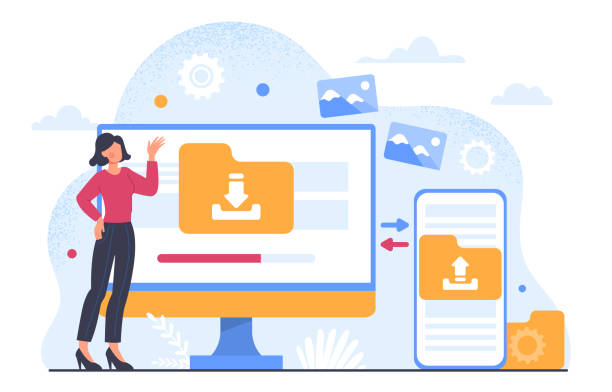
On-page SEO refers to all optimizations performed directly on your website pages and includes several factors that affect both search engines and users.
In the process of SEO-optimized website design, paying attention to these elements is of high importance.
The first and perhaps most important element is keyword research.
Choosing appropriate keywords that your target audience uses for searching is the foundation of successful on-page SEO.
After identifying keywords, they should be used naturally in page content, headings (H1, H2, H3), meta descriptions, and image alt tags.
Overuse of keywords (Keyword Stuffing) is not only ineffective but can also be penalized by Google’s algorithms.
Content quality is also vital.
Your content must be specialized, rich, unique, and valuable, answering users’ questions.
Longer and more comprehensive content usually performs better.
Also, optimizing title tags and meta descriptions for each page is essential.
The title tag should be engaging, include the main keyword, and be less than 60 characters.
The meta description is also an attractive and encouraging summary of the page content that prompts users to click.
URL structures should be short, descriptive, and include relevant keywords.
Using SEO-friendly URLs helps search engines better understand page content.
Optimizing images by using appropriate formats (like WebP), compressing them to reduce size, and using descriptive alt tags helps both loading speed and image SEO.
Internal links that connect related website pages improve the flow of SEO authority throughout the site and help users navigate the site more easily.
These elements together provide a strong foundation for creating an SEO-centric website.
Technical Aspects of SEO in Website Design and Development Process
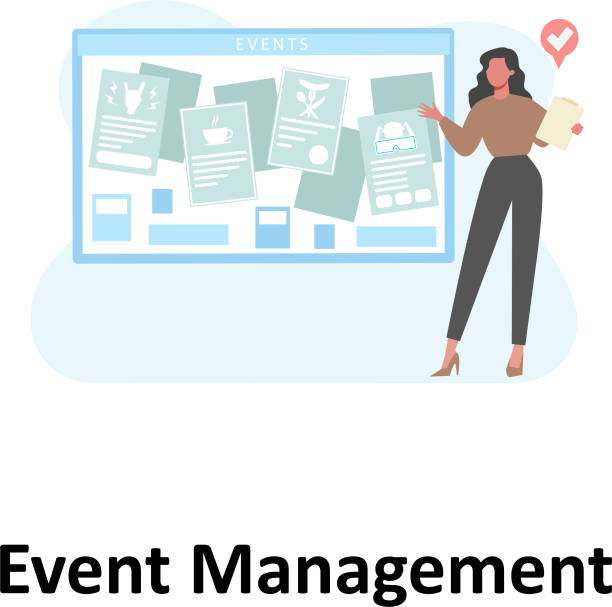
Technical aspects of website design that directly impact SEO are usually invisible to ordinary users but are crucial for search engine crawlers.
SEO-optimized website design would be incomplete without attention to these details.
Website loading speed is one of the most important factors; a slow-loading site creates a poor user experience and will drop in search results rankings.
Code optimization, image compression, using a CDN (Content Delivery Network), and caching are ways to increase speed.
Website responsiveness, meaning your site displays correctly on all devices (mobile, tablet, desktop), is now a requirement.
Given the significant increase in mobile searches, Google prioritizes mobile-friendly sites.
Using the HTTPS protocol is essential for website security and user information; it is considered a ranking signal by Google.
Site structure should be logical and hierarchical so that both users and search engine crawlers can easily find content.
The robots.txt file and sitemap (Sitemap.xml) are important tools that tell search engines which pages to index and which to ignore, and also ensure proper navigation on the site.
This section provides a deep explanation of the technical tips needed to achieve SEO-optimized website design.
Attention to structured data (Schema Markup) also helps search engines better understand your content and display it in a richer way in search results.
| Technical SEO Factor | Explanation and Importance | Verification Tools |
|---|---|---|
| Website Loading Speed | Direct impact on user experience and Google ranking. Ideal load time is under 3 seconds. |
PageSpeed Insights, GTmetrix, WebPageTest |
| Responsiveness and Mobile-Friendliness | Essential for ranking in mobile searches and user satisfaction. | Mobile-Friendly Test (Google) |
| HTTPS Protocol | Website and user security; a ranking factor for Google. | SSL Checker, Chrome Developer Tools |
| Sitemap.xml | Guides search engines to discover and index all important pages. | Google Search Console |
| Robots.txt File | Controls crawler access to specific parts of the site. | Google Search Console |
Content Strategy and Its Role in SEO-Centric Websites
![]()
Content is the heart of any website and plays an indispensable role within the framework of SEO-optimized website design.
Without quality and relevant content, even the best technical optimizations cannot guarantee long-term success.
Content strategy is the planning and execution of content production that is not only engaging and useful for your target audience but also well understood and ranked by search engines.
This includes various types of content: blog posts, service or product pages, Frequently Asked Questions (FAQ), videos, infographics, and case studies.
Each piece of content should be created based on relevant keywords and with the goal of providing value to the user.
Thought-provoking content that answers common user questions and encourages them to think and interact often performs well in search results.
Also, Evergreen Content, which does not lose its value over time, is a long-term investment that brings stable traffic.
When creating content, pay attention to its readability; using short paragraphs, subheadings, lists, and images makes the content more pleasant for the user.
Therefore, an analytical approach to audience needs and the keywords they use is essential for producing truly impactful content.
Regular publication of fresh, high-quality content indicates to search engines that your website is active and up-to-date, which is a positive signal for ranking.
SEO-optimized website design means integrating content and SEO from the outset, rather than optimizing content forcibly after design completion.
Every piece of content is an opportunity to target new keywords and expand your organic traffic reach.
Does your current corporate website not reflect your brand’s credibility and strength as it should? Rasavob solves this challenge for you with professional corporate website design.
✅ Increased credibility and visitor trust
✅ Targeted attraction of more customers
⚡ Click now for a free consultation!
User Experience (UX) and Its Impact on SEO and Website Ranking
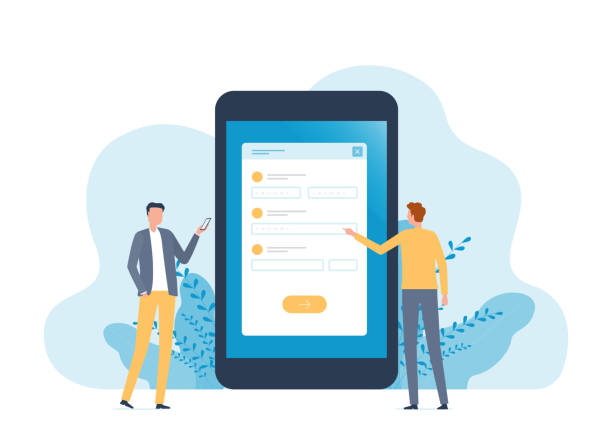
In recent years, the convergence of SEO and User Experience (UX) has been increasingly emphasized.
Google increasingly stresses the importance of providing an excellent user experience (UX), and this directly impacts site ranking.
An SEO-optimized website design does not merely serve search engine robots; it prioritizes real users.
Metrics such as Bounce Rate, Dwell Time, and Click-Through Rate (CTR) are all important criteria that Google considers for assessing user experience quality and directly affect your site’s ranking.
Easy and intuitive navigation on the site is one of the main pillars of good UX.
Users should be able to move easily from one page to another and find the information they need without confusion.
Attractive visual design, readability of fonts and colors, and appropriate use of white space all contribute to improving the visual experience and reducing eye strain.
User Interface (UI) design that serves UX is important here.
If users have a good experience on your site, they are more likely to stay longer, visit more pages, and return again.
These behaviors signal to Google that your site provides valuable and relevant content.
A site with poor UX, even with excellent content, may quickly lose users, leading to increased bounce rates and decreased dwell time, which is detrimental to SEO.
Therefore, throughout the process of creating an SEO-centric website, always consider how the user will interact with the site and how you can improve their experience.
This guidance is comprehensive for understanding this vital interaction.
This is not just a technical issue; it’s a human issue.
The Importance of Link Building and Its Types in Website SEO

Link building is considered one of the main pillars of Off-Page SEO and directly affects your website’s Domain Authority.
An SEO-optimized website design alone is not enough; to rank high for competitive keywords, you need credibility and trust from search engines, which is largely gained through backlinks from other reputable sites.
Incoming links act as ‘votes of confidence’ from other websites.
The greater the number and quality of these links, the more Google considers your site trustworthy.
Link types include internal links and external links.
Internal links that connect different pages of your website help search engines understand your site’s structure and distribute authority across the site.
These links also help users navigate your site easily and have a better user experience.
External links that point from other sites to your site are critically important for SEO.
Link building methods include various approaches, such as creating valuable content that naturally attracts links (Content Marketing), reaching out to bloggers and influencers, and listing your website in reputable directories.
Avoid low-quality and spammy links, as they can harm your site’s SEO.
The goal should always be to attract natural and relevant links from high-authority sites.
This is an analytical part of the SEO strategy that requires continuous attention and review.
This process complements optimizing website design for search engines.
Tools and Analytics for Monitoring Website SEO Performance
![]()
After implementing an SEO-optimized website design, the work is not over.
Continuous monitoring of SEO performance and data analysis is crucial to ensure the effectiveness of strategies and identify opportunities for improvement.
SEO tools help you gain a comprehensive view of your website’s status in search engines and make data-driven decisions.
One of the most important tools is Google Search Console.
This free Google tool provides valuable information about how Google views your site, including page indexing status, crawl errors, keywords your site appears for in search results, and security issues.
Another tool, Google Analytics, allows you to track user behavior on your site.
Information such as the number of visitors, pages visited, dwell time, bounce rate, traffic sources, and conversions can be viewed in this tool.
This information helps you better understand how users interact with your content and identify strengths and weaknesses in the user experience.
These analyses provide an explanatory and statistical approach to continuous SEO improvement.
In addition to these essential Google tools, there are also paid SEO tools like Ahrefs, Semrush, and Moz that offer more advanced capabilities such as competitor analysis, in-depth keyword research, backlink analysis, and rank tracking.
Using these tools allows you to have a news-based and simultaneously specialized approach to your site’s SEO status.
By regularly analyzing data and reports, you can optimize your SEO strategies and, through this, ensure that your website is designed with an SEO approach and is continuously improving.
| Tool Name | Main Use | Key SEO Benefits |
|---|---|---|
| Google Search Console | Monitors site performance in Google Search, identifies errors and technical issues. | Shows ranked keywords, indexing status, crawl errors, core web vitals. |
| Google Analytics | Analyzes user behavior, traffic sources, and conversion rates. | Deep understanding of user experience, identification of popular pages, optimization of user journey. |
| Ahrefs | Competitor analysis, keyword research, backlink audit. | Domain authority check, identification of backlink opportunities, competitor content analysis. |
| Semrush | Comprehensive tool for SEO, market research, PPC advertising. | Keyword analysis, rank tracking, site health check, identification of content opportunities. |
| Moz Pro | Comprehensive SEO tool, from keyword research to site audit. | Domain Authority (DA) and Page Authority (PA) metrics, keyword research tools, site audit. |
Common Mistakes in SEO Website Design and Ways to Avoid Them
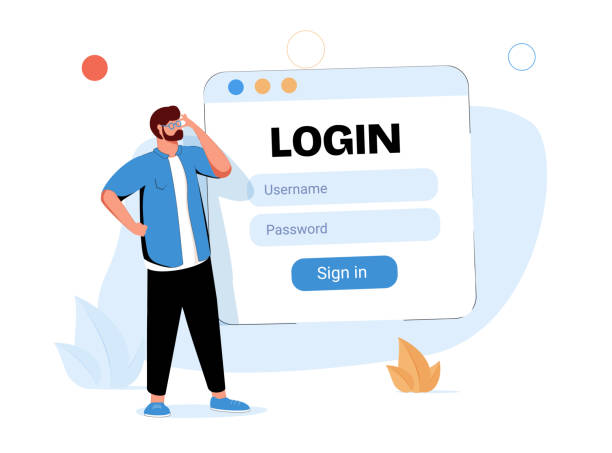
On the path to SEO-optimized website design, there are common mistakes that can render your efforts fruitless or even harm your site’s ranking.
Understanding these errors and learning how to avoid them is essential for long-term success.
One of the most common mistakes is over-focusing on keywords and neglecting content quality.
Frequent and unnatural use of keywords (Keyword Stuffing) is not only penalized by Google but also severely reduces user experience.
Instead, focusing on producing valuable content that addresses user needs, with natural keyword usage, is the correct approach.
Ignoring mobile optimization is also a major error.
In today’s world, a significant portion of web traffic comes from mobile devices.
A site that is not responsive and does not display correctly on mobile will not only lose users but also drop in Google’s mobile rankings.
Lack of attention to website loading speed is another common mistake.
Both users and search engines care about speed; a slow-loading site will have a high bounce rate and send negative signals to Google.
Duplicate or low-quality content can harm a site’s SEO.
Google prefers unique and valuable content.
Also, ignoring technical issues like broken links, indexing problems, or not using the HTTPS protocol can create serious obstacles for your site’s visibility in search results.
By taking a guidance approach and avoiding these mistakes, you can ensure that your website is designed with an SEO approach and is on the path to success.
Are you tired of your company’s website not being seen as it should be, losing potential customers? Solve this problem forever with professional and effective website design by Rasavob!
✅ Increase brand credibility and build customer trust
✅ Attract targeted sales leads
⚡ Contact us now for a free consultation!
The Future of SEO and the Role of Artificial Intelligence in Website Design
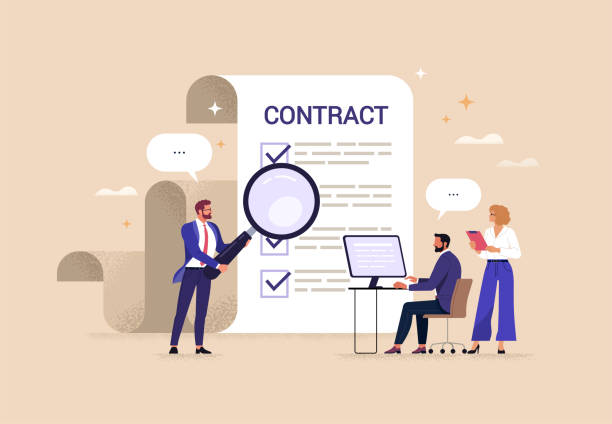
The world of SEO is constantly evolving, and with rapid advancements in technology, especially in Artificial Intelligence (AI), the future of SEO will also undergo fundamental changes.
SEO-optimized website design will be increasingly intertwined with AI in the future.
Google algorithms like RankBrain, BERT, and MUM are examples of using AI to better understand user intent and provide more accurate search results.
This means that SEOs and web designers must increasingly focus on high-quality content, answering complex questions, and providing an exceptional user experience, as AI is capable of understanding hidden meanings and content relationships.
Voice search is one of the areas where AI plays a key role and increasingly impacts SEO.
Users ask their questions more naturally and conversationally, requiring content optimization for long-tail keywords and direct answers.
Entertaining and creative tools utilizing AI can significantly assist in content generation, image optimization, and even personalizing the user experience.
Also, AI can be very effective in analyzing SEO data and identifying new patterns and opportunities for improving site rankings.
AI-powered content generation is also developing, but human oversight and editing are still needed to maintain content quality and originality.
However, using AI for brainstorming, initial drafts, and content optimization increases speed and efficiency.
Therefore, in designing an SEO-driven website for the future, we must be prepared to adopt and integrate AI technologies into our strategies.
This news-oriented perspective on future developments prepares us for the challenges and opportunities ahead.
Online Reputation Management and Its Impact on SEO and User Trust
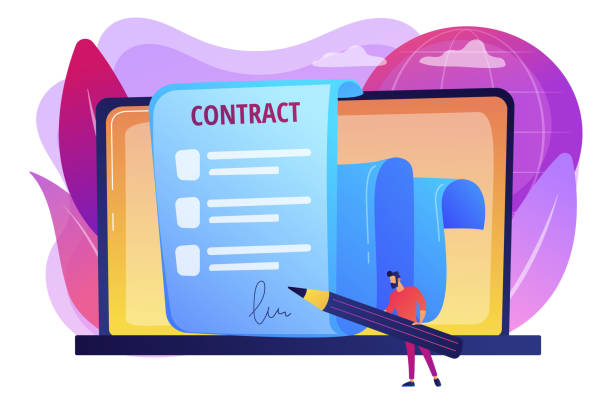
A business’s online reputation directly impacts its credibility and, consequently, its SEO and user trust.
In the process of SEO-optimized website design, one should not only focus on technical and content aspects but also on how users and search engines perceive your brand.
Positive customer reviews and feedback on platforms like Google My Business, review sites, and social networks can be powerful signals for Google.
These signals indicate to Google that your business is reputable and trustworthy, which can contribute to improving local SEO and overall site ranking.
Responding to reviews, both positive and negative, demonstrates your commitment to customers and transparency in your business.
Active online reputation management includes monitoring what is being said about your brand, responding promptly, and striving to resolve issues.
Content that includes customer testimonials and successful case studies can attract visitor trust in an entertaining yet persuasive way.
Furthermore, news articles, press releases, and positive media coverage on reputable websites not only help increase brand awareness but also boost your site’s SEO authority through high-quality incoming links.
These activities complement an SEO-optimized website design and show search engines that your brand is a recognized and respected authority in its industry.
In fact, building a website with an SEO approach means creating a healthy and trusted online ecosystem.
Frequently Asked Questions
| Question | Answer |
|---|---|
| What is SEO-optimized website design? | Designing a website that is optimized for both users and search engines to achieve higher rankings. This includes adhering to technical, content, and user experience principles. |
| Why is SEO important in website design? | The importance of SEO in website design is due to its role in increasing site visibility in search results, attracting organic traffic, improving user experience, and enhancing user credibility and trust. |
| What are the most important elements of SEO-friendly website design? | Responsiveness (mobile-friendliness), high loading speed, clear navigation structure, correct use of heading tags (H1-H6), image optimization, and high-quality content. |
| What is the impact of responsiveness (mobile-friendliness) on SEO? | Google uses mobile-first indexing, meaning it prioritizes the mobile version of websites for ranking. Therefore, responsiveness is crucial for SEO. |
| What is the role of site speed in SEO? | Faster websites provide a better user experience, reduce bounce rate, and are favored by search engines. Site speed is one of Google’s ranking factors. |
| How to optimize images for SEO? | By compressing image sizes, using descriptive and relevant file names, and most importantly, writing appropriate and content/keyword-relevant Alt Text. |
| What is the importance of content in SEO-driven design? | High-quality, relevant, and keyword-rich content is crucial for attracting and engaging users, as well as for ranking in search engines. Content is king in SEO. |
| How does URL structure affect SEO? | Clean, descriptive, short, and keyword-rich URLs help users and search engines better understand page content and appear in search results. |
| What is Schema Markup and what is its role in SEO? | Schema Markup is structured data that helps search engines better understand site content and display it as Rich Snippets in search results, which increases Click-Through Rate (CTR). |
| Should SEO be considered from the beginning of website design? | Yes, it is highly recommended. Integrating SEO principles from the initial phase of website design saves time and cost and leads to better and more sustainable results in the long run. |
And other services of Rasavob Advertising Agency in the field of advertising
Smart Social Media: A professional solution for digital branding with a focus on optimizing key pages.
Smart Digital Branding: Designed for businesses seeking user engagement through attractive UI design.
Smart Data Analysis: A professional solution for customer acquisition with a focus on attractive UI design.
Smart Brand Identity: An effective tool for user engagement with the help of smart data analysis.
Smart Link Building: A creative platform for improving digital branding with Google Ads management.
And over hundreds of other services in internet advertising, advertising consultation, and organizational solutions
Internet Advertising | Advertising Strategy | Advertorials
Sources
SEO-Optimized Website Design in Iranian Host Blog
SEO Website Design Services from SEO Iran
SEO-Optimized Website Design Guide in Raika Web
Article on Website Design with SEO in Site Cup
? Are you ready to transform your business in the digital world? Rasavob Afarin, a leading digital marketing agency, specializing in providing comprehensive solutions including SEO-optimized website design, SEO, content marketing, and social media management, is ready to help you grow and achieve maximum visibility.
📍 Tehran, Mirdamad Street, next to Bank Markazi, Kazerun South Alley, Ramin Alley, No. 6

